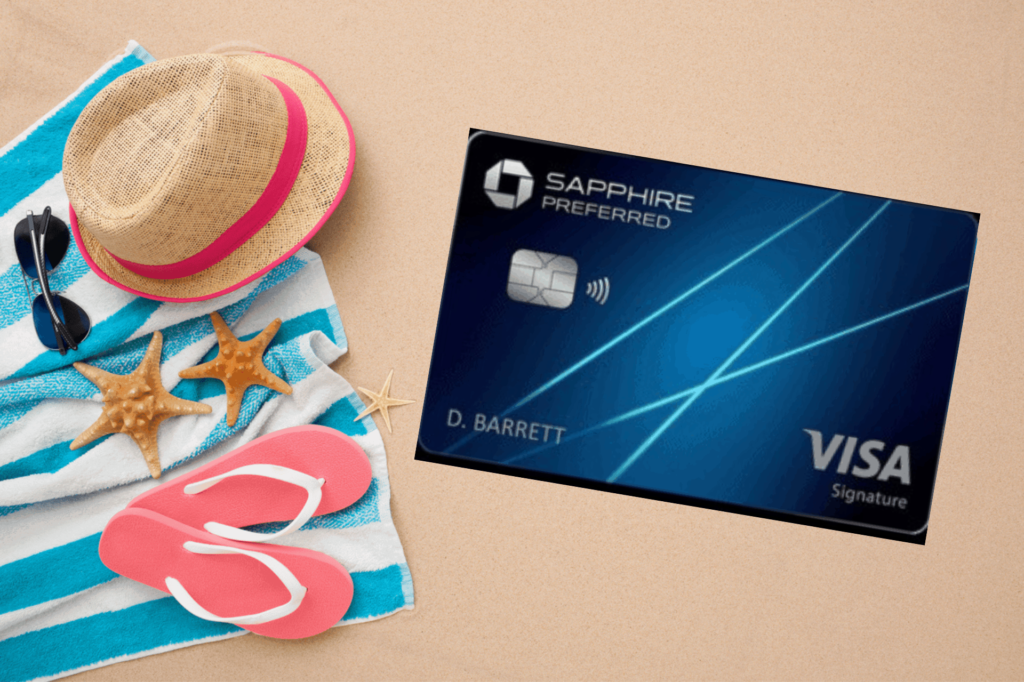Welcome back to our in-depth exploration of the Chase Sapphire Credit Card, where we continue our journey into the world of premium rewards, travel benefits, and financial empowerment.
In the first part of our article, we uncovered the essential eligibility requirements and gave you a taste of what this exceptional credit card has to offer. Now, in the second part, we’re diving even deeper into the card’s features and advantages, leaving no stone unturned as we unveil the hidden treasures that await savvy cardholders.
If the travel gods set out to design a perfect travel card, the Chase Sapphire Preferred Card is as close to heavenly as you’ll find.

Unlocking Chase Sapphire: Rewards, Travel, & More
We will give you all the information you need to get your card and enjoy the benefits it offers, especially for those who like to travel.
For a relatively low annual fee of $95, the card comes jam-packed with juicy rewards and other perks that make it a worthy contender in a field crowded with cards costing hundreds of dollars more a year to own.
Use it on its own as a starter or low-cost travel card, or pair it with another in the Chase family to maximize your returns on every dollar spent.
The Chase Sapphire Preferred Card is one of the best-known travel rewards credit cards, featuring 5 points per dollar on travel booked through the Chase travel portal and 3 points per dollar on dining, select streaming services and online grocery store purchases (excluding Target, Walmart and wholesale clubs).
These valuable points can be transferred to airline and hotel partners or redeemed directly for travel at a rate of 1.25 cents per point through Chase Ultimate Rewards.

Key advantages – Chase Sapphire Card
Earn 60,000 bonus points after you spend $4,000 on purchases in the first 3 months from account opening. That’s $750 when you redeem through Chase Ultimate Rewards.
Enjoy benefits such as a $50 annual Ultimate Rewards Hotel Credit, 5x on travel purchased through Chase Ultimate Rewards, 3x on dining and 2x on all other travel purchases, plus more.
Get 25% more value when you redeem for airfare, hotels, car rentals and cruises through Chase Ultimate Rewards. For example, 60,000 points are worth $750 toward travel.
With Pay Yourself Back, your points are worth 25% more during the current offer when you redeem them for statement credits against existing purchases in select, rotating categories.
Count on Trip Cancellation/Interruption Insurance, Auto Rental Collision Damage Waiver, Lost Luggage Insurance and more.

Redeeming points
Flexibility in redeeming your points is one of the best aspects of the Ultimate Rewards program. Points can be redeemed for travel, transferred to partner loyalty programs, redeemed for gift cards or simply used for cash back.
The value you get per point is highly dependent on how you choose to redeem your Ultimate Rewards points.
Chase touts redemption for travel through Chase Travel as a way to get 25% more for your points. Getting 1.25 cents per “UR” point is certainly a better value than redeeming for cash, gift cards or Apple products, where you receive just 1 cent per point.
However, you’ll get the most value an average of around 2 cents per point, by our estimates — when you transfer your points to travel partners. Check out the differences in rewards value based on how you redeem your points.

As we have already mentioned, the card has many benefits, see some more below.
Trip Cancellation/Interruption Insurance: If your trip is canceled or cut short by a covered situation, you can be reimbursed up to $10,000 per person and $20,000 per trip for your pre-paid, non-refundable travel expenses, including passenger fares, tours and hotels.
Auto Rental Collision Damage Waiver: Decline the rental company’s collision insurance and charge the entire rental cost to your card. Coverage is primary and provides reimbursement up to the actual cash value of the vehicle for theft and collision damage for most rental cars in the U.S. and abroad.
Purchase Protection: Covers your new purchases for 120 days against damage or theft up to $500 per claim and $50,000 per account.
Extended Warranty Protection: Extends the time period of the U.S. manufacturer’s warranty by an additional year, on eligible warranties of three years or less.
Baggage Delay Insurance: Reimburses you for essential purchases like toiletries and clothing for baggage delays over 6 hours by passenger carrier up to $100 a day for 5 days.
Trip Delay Reimbursement: If your common carrier travel is delayed more than 12 hours or requires an overnight stay, you and your family are covered for unreimbursed expenses, such as meals and lodging, up to $500 per ticket.
To request your card, click below.
Tips to increase your chances of approval
To increase your chances of obtaining a loan, it’s crucial to understand the evaluation criteria of banks and present yourself as a strong candidate. Follow these guidelines and strategies:
- Improve Your Credit History: Your credit history is an important factor for banks to assess your payment capability. A positive history can improve your chances of approval and secure lower interest rates.
- Stabilize Your Financial Situation: Before applying for a loan, ensure you have a solid financial situation, with stable employment and a consistent income history. If self-employed, be prepared to prove a regular income.
- Reduce Your Current Debts: Having a low debt-to-income ratio is attractive to banks. Try to pay off as much of your current debts, such as credit card balances, before applying for a loan.
- Organize Your Documentation: Have all necessary documents ready, including identification, income proof, bank statements, and possibly a credit history.
- Be Cautious When Choosing the Loan Amount: Only request the amount you truly need. Asking for more can be seen as risky by the banks.
- Consider a Co-signer or Collateral: Having a reliable co-signer or offering collateral can improve your chances, especially if your financial situation or credit history is not ideal.
- Research and Compare: Don’t limit yourself to one financial institution. Explore different banks, including online options and credit unions, as each has different criteria and interest rates.
- Be Transparent: Be honest and accurate in providing information on your application. Lack of transparency can lead to issues in loan approval.
- Understand the Terms and Conditions: Before signing any contract, be aware of all the terms, including interest rates, payment conditions, and potential fees.
- Develop a Relationship with the Bank: Having a good history with the institution can be beneficial, such as maintaining active accounts, a record of timely payments, and good communication with your account manager.
- Consider Financial Counseling: If you’re unsure how to improve your financial situation or credit history, seek professional financial advice.
- Be Ready to Negotiate: If you receive a loan offer that doesn’t meet your needs, don’t hesitate to negotiate with the bank, whether it’s about the interest or the loan amount.
- Maintain a Good Credit History: After obtaining the loan, continue to make timely payments and manage your debts efficiently.
- Explore Alternatives if Necessary: If you can’t get a loan from a traditional bank, consider other options like peer-to-peer lending, microfinance institutions, or government programs.
Following these guidelines, you not only increase your chances of getting a loan but also may obtain more favorable terms. Taking the loan application process seriously is vital, as it represents a significant financial responsibility that requires careful planning.


